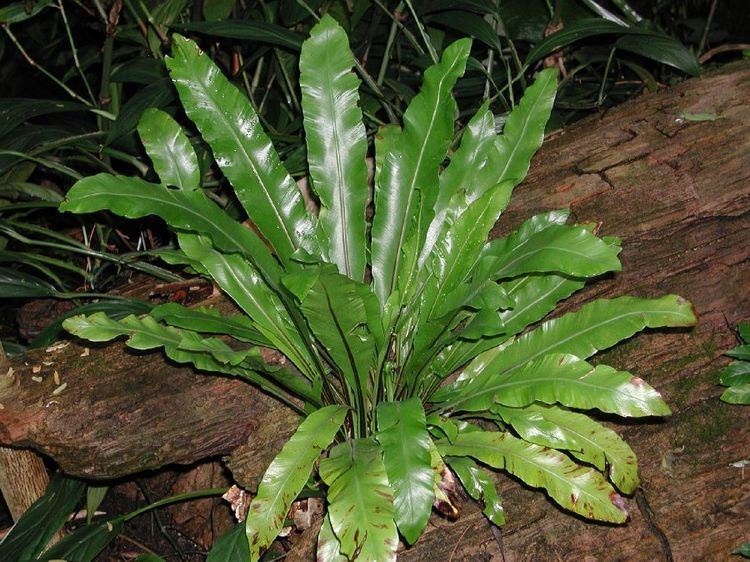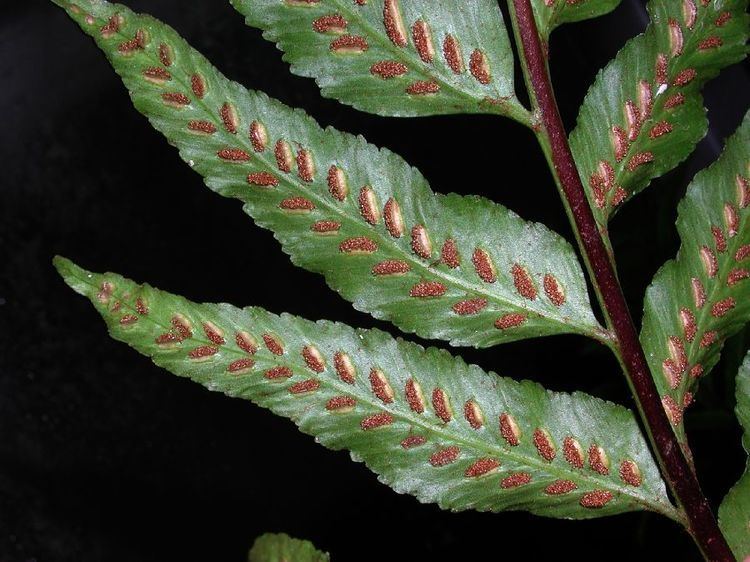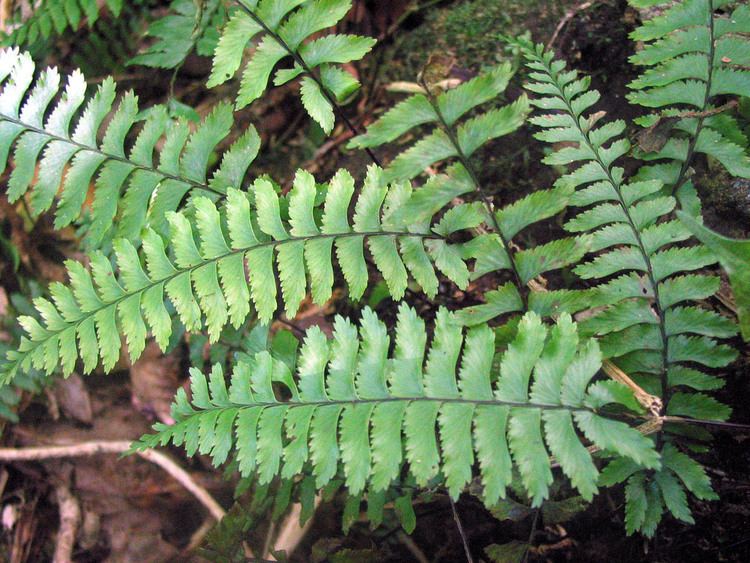Division Pteridophyta Scientific name Aspleniaceae Rank Family | ||
 | ||
Lower classifications Asplenium, Asplenium aequibasis | ||
The Aspleniaceae (spleenworts) is a family of ferns, included in the order Polypodiales or in some classifications as the only family in the order Aspleniales.

Members of the family all have intramarginal, linear sori with a flap-like indusium arising along one edge. Most pteridologists today consider this family of consisting of just two genera. Others still maintain segregate genera such as Phyllitis and Ceterach; however, the species segregated into these genera all hybridize readily with undisputed Asplenium species. A recent phylogenenetic study of Aspleniaceae (Murukami et al. 1999) shows that species segregated as Camptosorus and Neottopteris are nested within Asplenium and recommends that they be included in that genus, but suggests that Hymenasplenium (including Boniniella) and Phyllitis are distantly related to other Asplenium species and should be recognized at the generic level.

The genus Diellia, consisting of six species found only in Hawaii, was long considered to be independent, but now has been shown to nest within Asplenium.

The Aspleniaceae includes the two genera:
The genus Hemidictyum (formerly also placed in the Woodsiaceae) has been shown to be a phylogenic sister to Aspleniaceae, and therefore considered for membership in this family, but has instead been moved to its own family Hemidictyaceae.

Phylogenic relationships
The following diagram for the eupolypods II, based on Lehtonen, 2011, and Rothfels & al., 2012, shows a likely phylogenic relationship between the Aspleniaceae and the other families of the eupolypods II clade.
Christenhusz & Chase (2014) recommended the transfer of all eupolypods I to Polypodiaceae and all eupolypods II to Aspleniaceae, with previous families becoming subfamilies. Accepting their reclassification, the corresponding cladogram for Aspleniaceae is:
